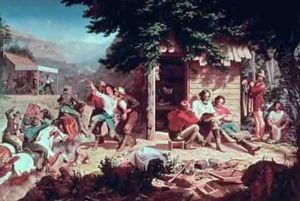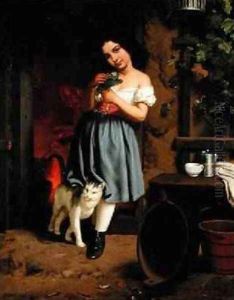Karl Nahl Paintings
Karl Nahl, also known as Charles Christian Nahl and sometimes Karl Christian Heinrich Nahl, was a German-born painter who later became associated with the Californian art scene during the Gold Rush era. Born on October 18, 1812, in Kassel, Germany, Nahl was part of a family with a strong artistic tradition. His father, Johann August Nahl, was a notable sculptor, and his uncle, Friedrich Nahl, was also an artist. These early influences undoubtedly shaped Karl's future path in the world of art.
Nahl received his formal artistic training at the Kassel Academy, where he honed his skills in drawing and painting. In 1846, due to political unrest in Germany, Nahl, along with his mother and siblings, emigrated to the United States, initially settling in New York. However, it was the Gold Rush that prompted Nahl, his brother Hugo Wilhelm Arthur Nahl, and their friend Charles Christian Heinrich Nahl to move to California in 1851, where they sought both fortune and new opportunities.
In California, Nahl quickly became a prominent figure in the art community. Instead of mining for gold, he mined the rich cultural landscape, producing works that captured the spirit of the frontier life. Nahl's work included genre scenes, portraits, and landscapes. He is particularly remembered for his detailed and vivid depictions of life during the Gold Rush, which became iconic images of this era in American history. His painting 'Sunday Morning in the Mines' (1872) is often highlighted as one of his major works, reflecting the gritty reality of the miner’s life.
Beyond painting, Karl Nahl was also involved in designing scenery for theatres in San Francisco and contributed illustrations for books and periodicals. His talents extended to architectural drawings, which influenced some of the building styles in the burgeoning state of California.
Nahl's legacy is tied to his ability to capture the essence of a transformative period in American history. His works are considered an important part of the visual historical record of California during the mid-19th century. Karl Nahl passed away in San Francisco on March 1, 1878. His contributions to art continue to be recognized by historians and collectors, with his works displayed in various institutions, including the Crocker Art Museum in Sacramento and the Oakland Museum of California.

